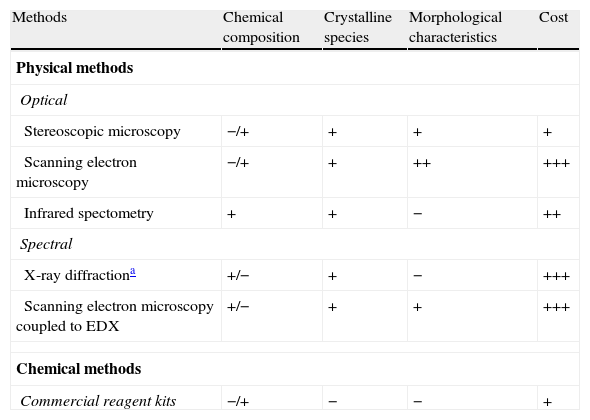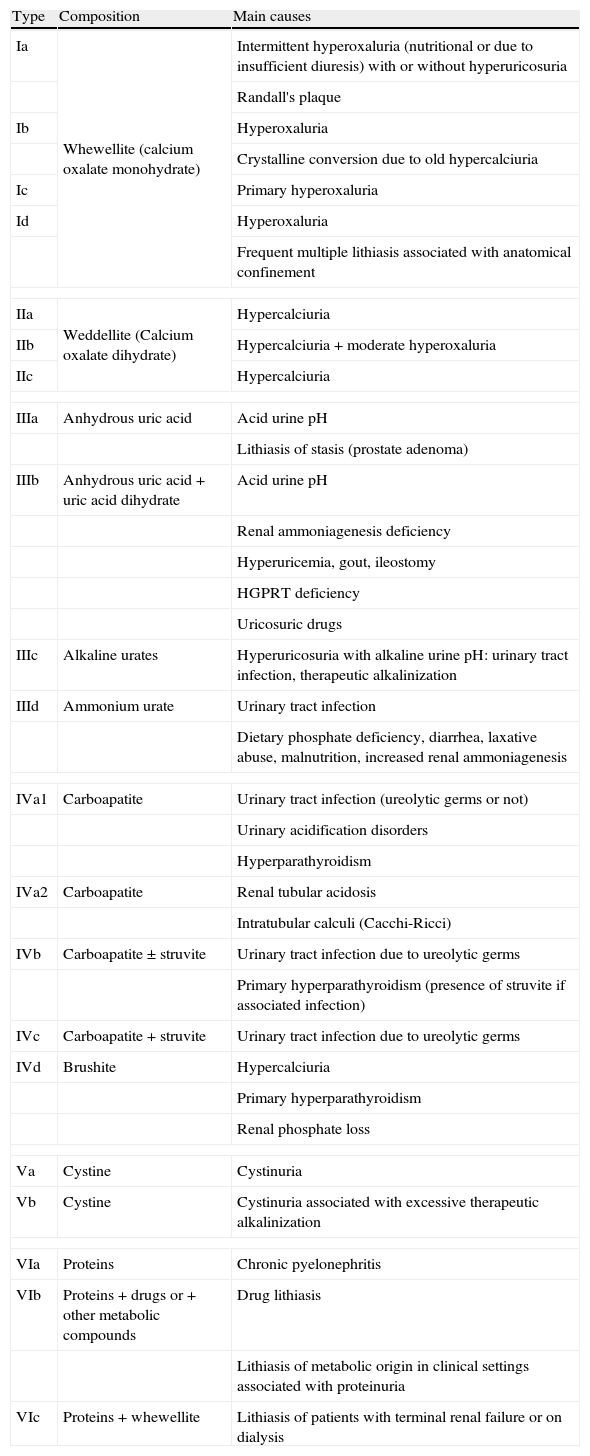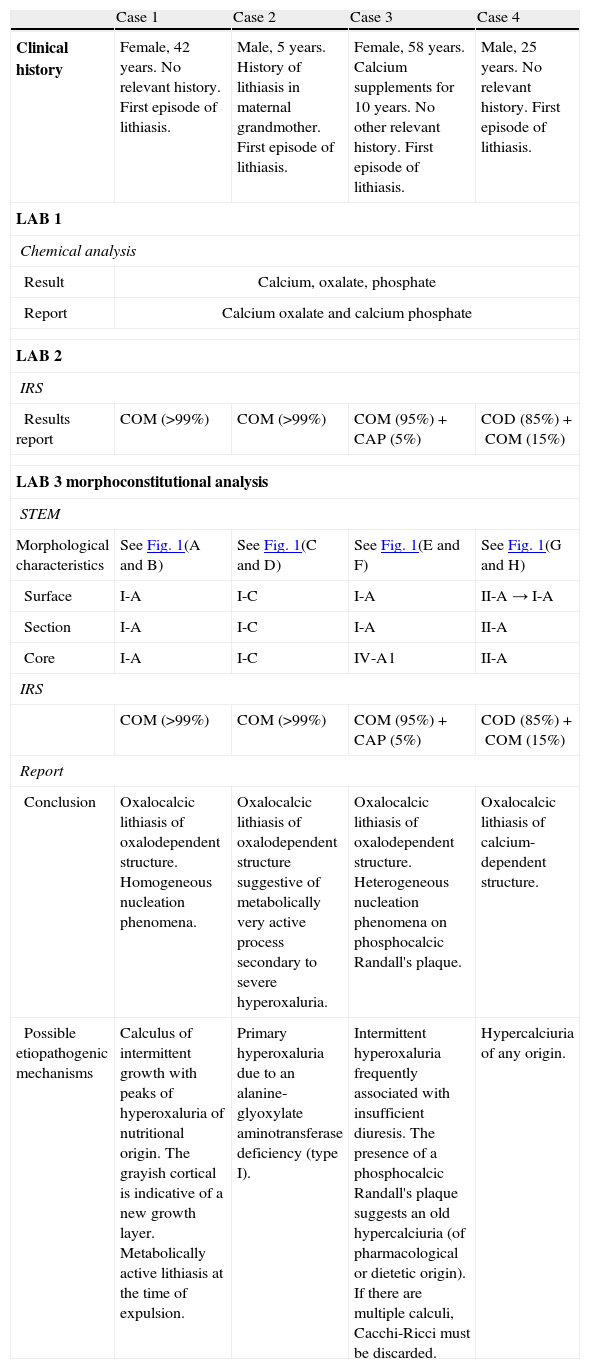There is heterogeneity of criteria on the utility of urinary stone analysis as well as on which is the most suitable methodology. This review presents the analysis of the lithiasis using the morphoconstitutional analysis technique based on the combination of the stereoscopic microscopy (SM) with infrared study (IRS).
Summary of the evidenceThere are many techniques to analyze the stone: chemical analysis, electron microscopy, X-ray diffraction, SM and IRS. Reviewing each one of these techniques and through the study of several clinical cases, this review shows the usefulness of stone analysis and the pros and cons of each one of the mentioned techniques. Furthermore, it can be clearly seen how the morphoconstitutional analysis is the one that offers the most useful clinical information to the urologist. In addition, classification of the lithiasis based on this method and its clinical correlation with patients are presented.
ConclusionsUsing the morphoconstitutional study to analyze the stone offers more information than the other techniques and it makes it possible to establish a stone classification of important clinical and diagnostic utility.
Existe una heterogeneidad de criterio sobre la utilidad del análisis del cálculo urinario, así como de cuál es la metodología más adecuada. En esta revisión se presenta el análisis de la litiasis mediante la técnica del estudio morfoconstitucional basada en la combinación de la microscopía estereoscópica (MEST) con el estudio de infrarrojos (EIR).
Resumen de evidenciaExisten múltiples técnicas de análisis del cálculo: análisis químico, microscopía electrónica, difracción por rayos X, MEST y EIR. Mediante la revisión de cada una de estas técnicas y el estudio de varios casos clínicos, el presente trabajo muestra la utilidad clínica del análisis del cálculo, así como las ventajas e inconvenientes de cada uno de los citados métodos. Por otro lado, se evidencia cómo el análisis mediante el estudio morfoconstitucional es el que más información clínica de utilidad ofrece al urólogo. Asimismo, se presenta la clasificación de las litiasis basadas en este método y su correlación clínica con el paciente.
ConclusionesEl análisis del cálculo mediante la técnica del estudio morfoconstitucional aporta más información que el resto de técnicas y permite establecer una clasificación del cálculo de gran utilidad clínica y diagnóstica.
Artículo
Comprando el artículo el PDF del mismo podrá ser descargado
Precio 19,34 €
Comprar ahora










